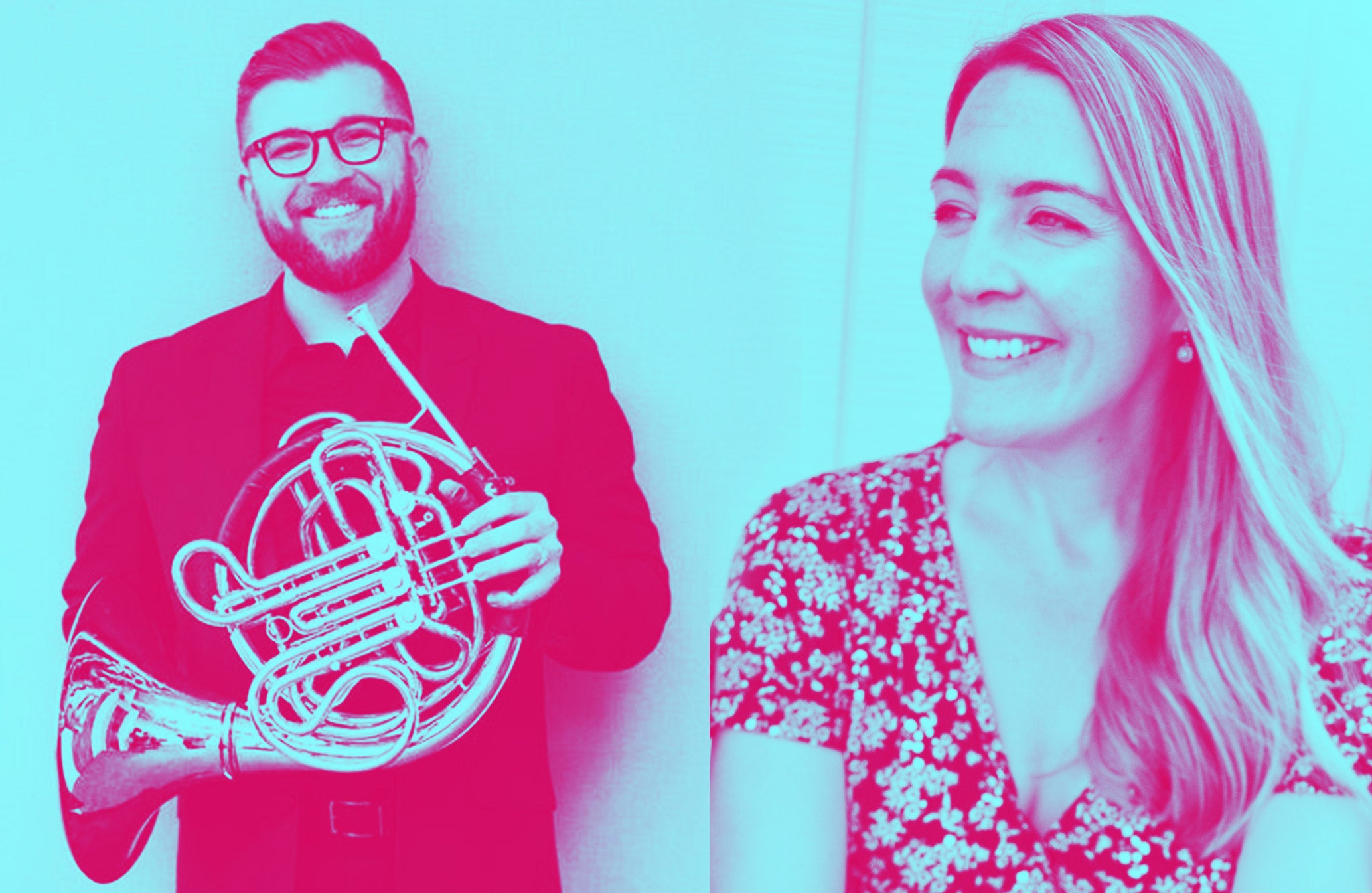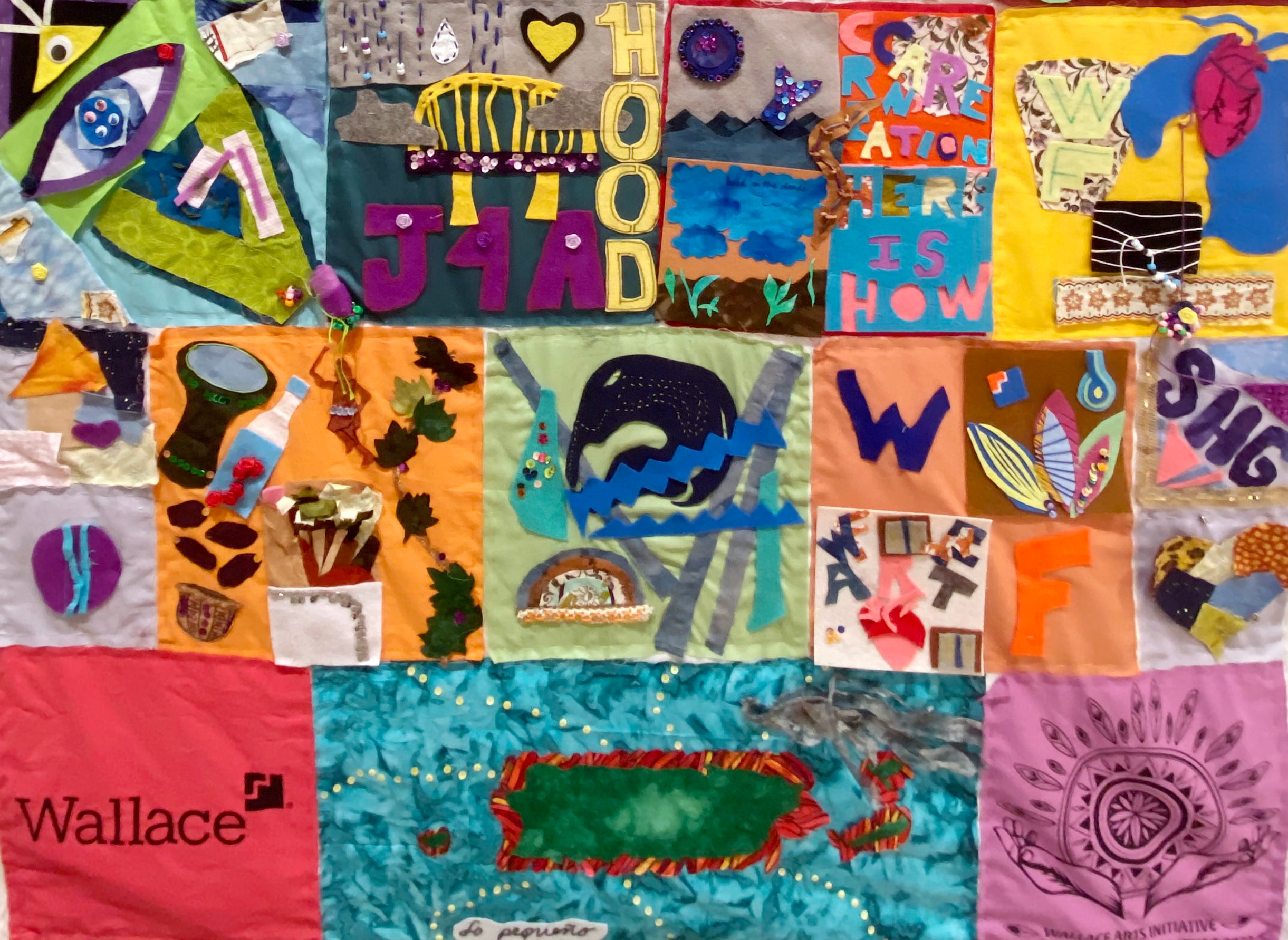As students gear up for the spring semester (whether in-person or virtually), many are preparing to return to programs that look and operate much differently than in previous years. Those who teach and run arts administration programs have experienced this shift as well, with many programs rethinking and reworking pre-existing systems to acclimate to the current environment.
We recently connected over email with John-Morgan Bush, Director of Lifelong Learning at The Juilliard School, and Lee Ann Scotto Adams, Executive Director of the Association of Arts Administration Educators (AAAE), over email to discuss obstacles and bright spots that the arts higher education landscape has experienced as a result of the pandemic, its resultant economic hardships and the urgent, ongoing conversations around equity and access. Despite previously anticipated enrollment drops in higher education due to rising COVID-19 cases on campuses and the potential drawbacks of virtual course instruction, Bush and Adams share that arts programs and their students—from the undergraduate to the continuing education level—have demonstrated perseverance and agility, adapting and learning within a new environment.
The ongoing COVID-19 pandemic caused enrollment changes in higher education programs as cases on campuses rose last fall. What are some challenges unique to arts programs? And how are people addressing them?
LSA: Many arts administration programs in the AAAE network have actually seen recent increases in inquiries, applications and enrollment. This isn’t too surprising, as this tends to happen in higher education when there is an economic crisis. There was a similar trend during the 2009 economic collapse. People go back to school to augment their skills or make a career change; this is true at the undergraduate level too. One of AAAE’s undergraduate programs in the Midwest has seen a 25 percent increase in its freshman class this year, and they are getting an influx of undergraduate students who are choosing arts-discipline majors and minors. Undergraduate students who are interested in studying the arts may be choosing arts administration during this time of economic uncertainty, as the skills taught in these programs are transferrable to multiple careers.
JMB: First, I believe that it is important to realize that the impact of COVID-19 is being felt acutely across all sectors, public and private. We are out of balance as a society right now and are collectively reeling. Throughout the performing arts, there are the obvious challenges such as not being able to convene an audience in person or teach in our traditional settings. But beyond these immediate dilemmas, I believe that one of the biggest challenges that we need to address is how we keep our adult audiences interested in the artistic work we do during this time of separation. I believe that curiosity is the sister to creativity.
In Juilliard’s Evening Division (an adult learning program that offers an array of programs in various arts disciplines), we are looking at every way possible to provide value to our students, so they remain curious about the art forms that they love, even in the absence of live performance. When they stay curious, they are engaged to not only support artistic practice, but willing to participate in the artistic process as well. In my view, curiosity is what we will need most of all when the pandemic passes (and it will!)—we will need communities who are inquisitive enough about our artistic output that they want to support us and participate as soon as they are able to do so.
What kinds of changes and/or adjustments have programs made for disciplines that require frequent and rigorous in-person instruction?
LSA: Fortunately, for arts administration and related programs, such as theatre management, entertainment industry management, cultural management, arts leadership, arts entrepreneurship, cultural policy and museum studies, these programs can be easily transitioned and scaled to an online classroom environment. This is one area of arts teaching and learning that doesn’t require hands-on instruction. Even before the pandemic hit, many arts administration programs in the AAAE network were offered online or offered an optional online component to the curriculum, especially at the graduate level.
JMB: COVID-19 has upended our belief about what is possible and what learning environments in the performing arts can look like and it has catalyzed innovation. The impact on continuing education was no less substantial. If you envision online learning as students “beaming” into classes via broadband and greeting each other and their professors through webcams built into laptops you are not entirely wrong. But, if your mental image is a group comprised solely of tech-savvy millennials and gen Z’ers livestreaming into classes, that’s where you’d be mistaken. At Juilliard, it was in fact the intrepid students of the Juilliard Evening Division, more than 50 percent of whom over the age of 60, who paved the way in online learning. COVID-19 has taught us that flexibility is needed more than ever—it’s essential. It has also reminded me to never underestimate the human capacity to adapt and learn at any age.
What has been lost in all the technology? Alternatively, what have programs and educators gained?
JMB: I’ve advised our continuing education faculty to think of online learning not merely as a replacement or facsimile of an in-class lecture, but rather as a completely new opportunity to provide more value and deepen learning experiences. Working together with our Evening Division faculty, we’ve found ways to creatively organize continuing education curricula so that students realize and can track where they are on their carefully designated learning journeys. We can organize our supplemental materials, videos, scores, readings and more, in ways that spark curiosity and meaning to the individual artistic experience.
LSA: We’re seeing some advantages as well. Though it was a tough start when the pandemic hit and arts leaders initially panicked, I believe these technologies have enhanced the field by broadening access to the arts. As an example, the AAAE academic conference moved to an entirely virtual format in May 2020, and drew in almost double the number of attendees, with members joining us from China, Australia, Vienna and Manila. These international members typically aren’t able to attend the annual meetings, as travel budgets and academic schedules can be prohibitive. This year, the virtual formal levelled the playing field for all and brought many new voices to the conversation.
The Wallace Blog recently posted an article by Zenetta S. Drew where she states, “Artists—whether professional or not—became the unofficial essential workers of the pandemic, vital to our nation’s health and recovery, and an overwhelming validation of the importance of the arts.”
Our nation is consuming the arts now more than ever. Perhaps it’s the equivalent of eating a pint of ice cream to combat a stressful day. The arts are nourishing to the soul. They also provide an escape. Drew goes on to state, “the continuation of the pandemic has…also forced a group of technology-resistant learners of all ages to learn to use online platforms, opening up arts events to new audiences, many of whom will pay to view performances online.”
Again, here we see a case for technology broadening access to the arts among new audiences.
In what ways have students inspired you through their practice during this critical juncture?
JMB: One of the most devastating impacts of COVID-19 has been the isolation it has imposed on elderly and other at-risk populations. While I knew that learning would persist online, in those early days I wondered if our sense of community would as well. I can say now, with total certainty, that community does persist. As we moved our courses online, I was inspired by the student interactions with each other and faculty. In March during the darkest days of the pandemic [in New York], I witnessed one professor end his class with the sincere wish that his students (mostly senior citizens) stay safe and well, and they reciprocated the sentiment. But the emotion behind it, the role that this course had come to play in both the lives of students and teacher was extraordinary. It provided rhythm to the passing of time, opportunity to connect with like-minded peers when isolation was the order of the day and celebration and/or escape through music.
LSA: Since the pandemic began, the AAAE membership has seen an influx of new student members. I believe students are eager to connect and engage with each other and with leaders in the field. We have also seen strong student interest in leadership opportunities. Perhaps with the limited internship opportunities available during the pandemic, students are looking for alternative avenues to build their skills and grow their networks. I recently put out a call for conference planning committee members, and I received 13 student volunteers! I received so many offers from students to assist that I had to create a student planning sub-committee. Like the at-risk populations John-Morgan references, students have so much to lose with social isolation and dramatic shifts in academic and professional development opportunities, but they are proving to be absolutely resilient and brilliant through all of this.
What do you think the arts higher education landscape will look like next the five to ten years?
LSA: There are so many factors at play here – the political landscape; policy decisions (especially around federal student loans and possible federal student loan forgiveness coming down the line); timely COVID-19 relief funding to assist individuals, businesses and organizations that are struggling right now; and accumulating debt among so many Americans. I think we will continue to see growth in interest in arts administration programs and other arts disciplines with transferrable skills, and an increase in quality online and hybrid programs. There is much more widespread recognition of the value of the arts in our society, especially as we navigate these difficult times, and this will continue to drive interest in arts administration programs.
JMB: This is a great question and one for which I desperately wish that I had a definitive answer. But seeing that none of us have a crystal ball, we must be careful to not project but evaluate what we see before us today. In public schools, higher education and continuing education, we are beginning to see the value of flexible and hybrid learning formats as well as remote work environments. We are seeing that excellent teachers are excellent both online and in-person and that a humanistic approach to instruction has always been an incredible asset. We are collectively acknowledging that digital performance will play an ongoing role in our artistic lives. It’s bringing people together. We are seeing students signing up for online classes with siblings, parents and friends on opposite sides of the country. Adult education courses are a great way for them to stay connected through the arts. This is just one of many new opportunities to pique curiosity and find new ways to engage adult learners with our art forms.
Please note, John-Morgan Bush’s responses are based on his personal expertise and as Juilliard’s Director of Lifelong Learning.
John-Morgan Bush photo by Gregory Mahan; Lee Ann Adams photo by Frederick Fullerton




